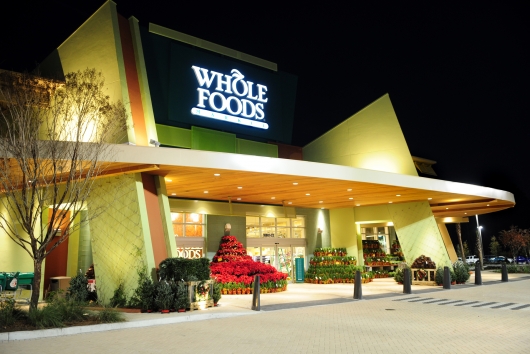
Whole Foods expects to make $13 billion this year. It’s more than a third of the way toward its goal of having 1,000 stores, it’s surged ahead on a new list of the best-performing U.S. companies, and its customers are buying more – and more expensive – stuff.
And its stock tanked today.
Shares of the company were down more than 9% after the good-for-you grocery chain discussed plans to try to shed its image as a high-priced organic paradise. Those who invested in a premium product apparently aren’t too sure they want to trade down.
But never mind the investors, what does it mean for you – as a Whole Foods, or a non-Whole Foods, shopper? In short, you’ll be seeing a lot more inexpensive products on the shelves.
Whole Foods has previously discussed what it calls the “20/80 rule” – 20% of its customers make up around 80% of its sales. Those are the intensely loyal Whole Foodies who simply won’t shop anywhere else. The challenge is how to get the other 80% to be anywhere near as loyal. The company says it made no additional progress in attracting a significant number of new customers this past quarter. So Whole Foods’ solution is to tempt the non-Whole Foods shopper with more affordable options.
That’s what spooked investors today, because naturally, selling lower-priced items is likely to mean lower profits. “We intend to expand our value offerings across the store and improve our competitive price positioning,” co-CEO Walter Robb said yesterday. “As such, we are not forecasting an improvement in gross margin this year.”
But what’s bad for Wall Street could be good for customers. Whole Foods plans to continue discounting more, and offering more lower-priced store-brand products. Sound a little like Trader Joe’s? “We consider them our main competitor,” co-CEO John Mackey told Bloomberg Businessweek. “We match all Trader Joe’s prices so they’re not underselling us. [Whole Foods’ private-label brand] 365 is geared to match Trader Joe’s prices.”
Both CEO’s acknowledged that Whole Foods is facing stiffer competition, and merely offering high quality may not be enough anymore. They say they regularly check the prices on 600 items offered by 80 competitors, to keep their prices in check. “There’s definitely a consensus building with our customers that Whole Foods has good value and good prices,” company executive David Lannon said in November.
And there are lots of potential shoppers out there, Whole Foods belives. There are plenty of “folks that are not eating as healthy,” Robb said. “The fresh healthy food market is very large, and we think by continuing to improve our position we have actually got a much bigger market than we’re currently serving.”
As long as they don’t turn off the loyal shoppers they’re already serving, by forcing them to share the aisles with – horrors! – bargain hunters. If Whole Foods becomes more like a Trader Joe’s, though, or even a Walmart – will it still be the same Whole Foods its loyal shoppers have come to love? The risk of losing some of its hard-earned cachet, in order to allow you to keep more of your hard-earned cash, is one that the company apparently is willing to take.
Image source: Whole Foods Markets










